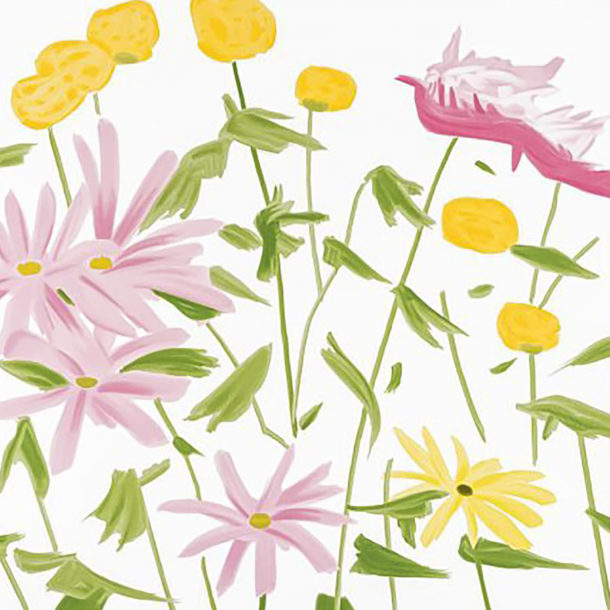From Ottoman obsession to Instagram icon, the tulip’s enduring allure
From imperial obsession to social media darling, the tulip’s allure has transcended centuries, captivating hearts with its intoxicating fragrance, kaleidoscope of colours, and elegant form. Today, we embark on a vibrant voyage through time, tracing the tulip’s fascinating history and its enduring reign as a cultural icon. Image © Elizabeth Blackadder RSA Tulips, 1978 Watercolour on paper
Origins in the East: A Tale of Silk and Sultans
Our journey begins in the fertile crescent of Central Asia, where wild tulips, with their star-shaped blooms, thrived in the foothills of the Pamir Mountains. By the 10th century, these captivating blossoms had captured the imagination of the Ottoman Empire, where they were cultivated with meticulous care in the gardens of sultans and pashas. The tulip became a symbol of wealth, power, and even divine perfection, its intricate patterns and vibrant hues mirroring the opulent tapestry of Ottoman life.
Tulipmania Takes Root: A Frenzy of Florins and Fortunes
In the 16th century, the tulip embarked on a remarkable journey westward, finding its way to Europe through diplomatic exchanges and intrepid explorers. Its arrival in Holland sparked an extraordinary phenomenon known as “tulipmania.” The Dutch, smitten by the flower’s exotic beauty and endless variety, began feverishly trading tulip bulbs, their prices skyrocketing to astronomical heights. Single bulbs could fetch the equivalent of a house, and fortunes were made and lost overnight in this frenzied speculation. While the bubble eventually burst, leaving behind a trail of financial ruin, ” tulipmania ” cemented the flower’s place in European culture, forever associated with extravagance and desire.
A Symbol of Resilience: From Ottoman Decline to Global Icon
The Ottoman Empire’s decline in the late 19th century saw a waning of the tulip’s cultural significance. Yet, like the resilient flower itself, its spirit refused to be extinguished. In the 20th century, the tulip experienced a revival, its cultivation spreading across the globe. Today, it is a beloved symbol of spring in countries as diverse as the Netherlands, Turkey, and Japan. And in recent years, the tulip has found a new platform for its allure on social media, with its photogenic blooms gracing countless Instagram feeds, reminding us of its timeless beauty and power to inspire.
Beyond the Bloom: A Legacy of Art, Folklore, and Fashion
The tulip’s influence extends far beyond the garden. It has inspired countless works of art, from the delicate still lifes of the Dutch Golden Age to the bold canvases of contemporary artists. In folklore, the tulip is often associated with love, passion, and even rebirth. And no flower has graced the world of fashion with such vibrant panache. From the flamboyant tulip skirts of the 16th century to the whimsical floral prints of today, the tulip continues to bloom on the runway, a testament to its timeless elegance.
Redouté’s Book of Flowers
Pierre-Joseph Redouté was a French botanical artist who is best known for his stunningly detailed illustrations of flowers. His book, “Les Liliacées,” published in 1802, features 34 plates of tulips, each one a masterpiece of botanical accuracy and artistic beauty. Redouté’s tulips are delicate and graceful, with soft, blending colors and a sense of movement that seems to capture the very essence of the flower.
Alex Katz & Elizabeth Blackadder
In the 20th century, tulips continued to inspire artists. American painter Alex Katz created a series of bold, graphic tulip paintings in the 1960s. His tulips are flat and stylised, with vibrant colours and sharp outlines that make them instantly recognisable. Scottish painter Elizabeth Blackadder was also drawn to tulips. Her paintings are more traditional in style, but they capture the delicate beauty of the flower with a quiet intimacy.
David Hockney’s Sun-Kissed Blooms
And how could we forget the masterful David Hockney? His love for California sunshine spilled over onto his canvases, where tulips often bask in the golden glow. Whether capturing a single stem in a vase or a vibrant field bursting with colour, Hockney’s tulips exude a sense of joy and optimism. His loose brushstrokes and bold outlines capture the flower’s carefree spirit, while his masterful use of light and shadow brings them to life with a dazzling vibrancy.
As we enter spring, let us celebrate the tulip, not just for its captivating beauty, but also for the rich tapestry of history and culture it embodies. From its humble origins in the East to its global stardom.

